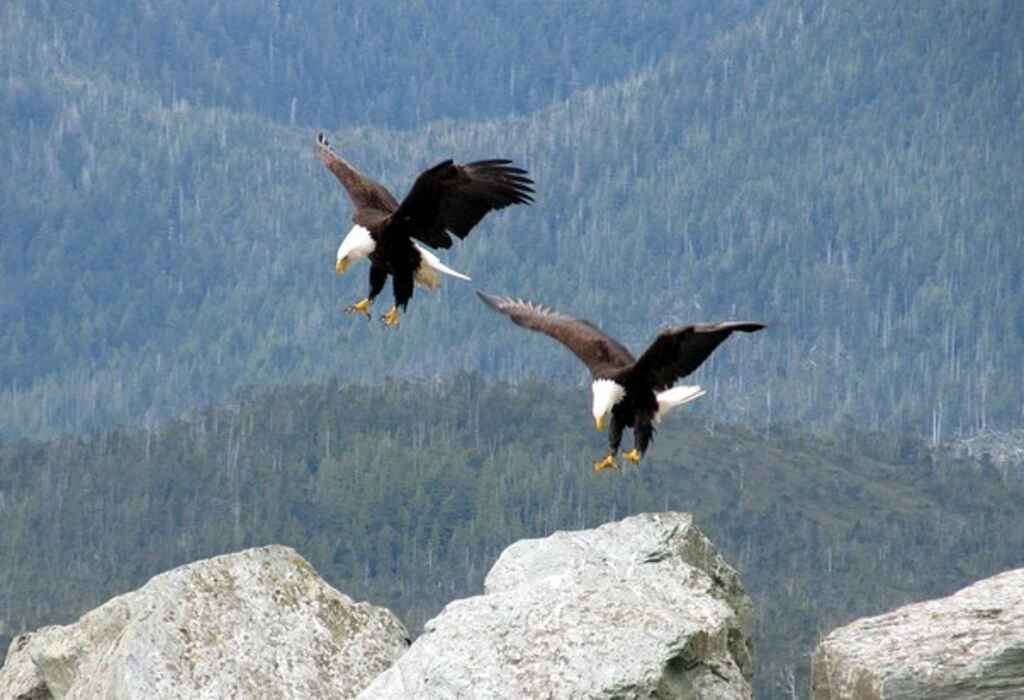In the realm of the avian kingdom, few creatures captivate the human imagination quite like the majestic eagle. These regal birds of prey, known for their sharp vision and soaring flight, have long been revered as symbols of freedom, power, and independence.
But, when do eagles start to fly? The answer lies within the intricate life cycle of eagles, a fascinating journey from hatching to adulthood.
In this article, we will explore the precise moment when eagles spread their wings and take to the skies, along with the physical adaptations that enable their remarkable flight abilities.
We will delve into the hunting and feeding strategies that sustain their survival, as well as the social interactions and communication methods employed within eagle communities.
Additionally, we will examine the threats faced by these iconic birds and the ongoing conservation efforts aimed at protecting their populations.
Join us as we celebrate the awe-inspiring phenomenon of eagle flight and uncover the symbolism and cultural significance that surrounds these extraordinary creatures.
Table of Contents
- 1 Key Takeaways
- 2 When Do Eagles Start To Fly
- 3 The Life Cycle of an Eagle
- 4 The First Flight
- 5 Physical Adaptations for Flight
- 6 Hunting and Feeding Strategies
- 7 Social Interactions and Communication
- 8 Migration and Seasonal Movements
- 9 Lifespan and Reproduction
- 10 Threats and Conservation Efforts
- 11 The Symbolism and Cultural Significance of Eagles
- 12 Observing Eagles in the Wild
- 13 Conclusion: Celebrating the Majesty of Eagle Flight
- 14 Frequently Asked Questions
- 15 Author
Key Takeaways
- Eagles start to fly at around 10 to 12 weeks old, with their first flight being guided by their parents.
- Eagles have physical adaptations for flight, including streamlined wings, lightweight yet strong feathers, exceptional vision, and sharp talons for capturing prey.
- Eagles establish social hierarchies and communicate non-verbally to establish dominance.
- The migration patterns of eagles are influenced by temperature, food availability, and daylight duration.
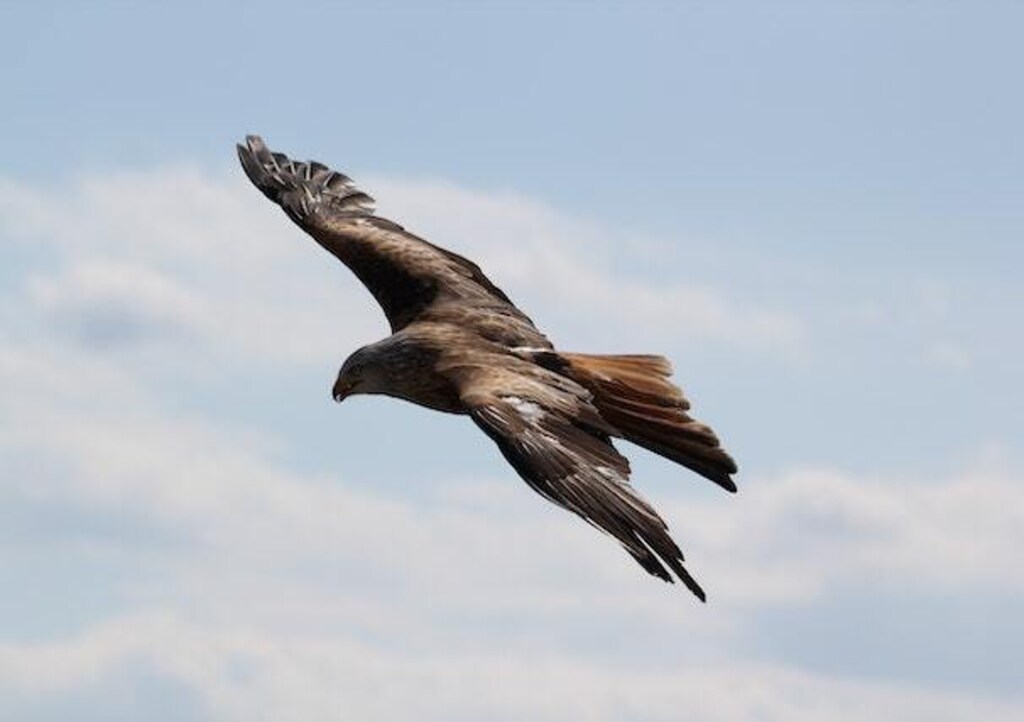
When Do Eagles Start To Fly
Eagles start to fly when they reach a certain age and physical development. Typically, young eagles begin their flight training around 10–12 weeks old. Initially, they practice “branching,” hopping between branches to build strength.
At around 14–16 weeks, they attempt short flights, gradually improving their skills. Flight mastery is crucial for hunting and survival.
The process varies among species, with larger eagles taking longer to learn.
Observing eagles’ early flight stages can be a remarkable sight, showcasing their impressive adaptability and evolution as magnificent aerial predators.
The Life Cycle of an Eagle
The life cycle of an eagle begins with the hatching of its eggs.
The female eagle lays one to three eggs, which are incubated for approximately 35 days. During this time, the parents take turns keeping the eggs warm and protecting them from predators.
Once the eggs hatch, the eaglets are covered in down feathers and are completely dependent on their parents for food and care.
Over the next few weeks, the eaglets grow rapidly, and their feathers start to develop. They spend most of their time in the nest, gradually strengthening their wings and legs.
Nesting behavior is crucial during this stage, as the parents provide food and protection for the eaglets.
As the eaglets reach around 10 to 12 weeks old, they are ready for their first flight. With their wings fully formed, they take the leap into the air, beginning their journey as independent birds of prey.
The First Flight
With the anticipation of their inaugural soar, young eagles venture into the skies for the first time. This momentous occasion marks the beginning of their flight training, a critical stage in their development.
During the first flight, eaglets rely on their instincts and the guidance of their parents to navigate the vast expanse of the sky.
They learn to control their wings, adjust their balance, and use their powerful talons to grasp onto branches or prey.
As they gain confidence and experience, they gradually become adept at soaring and gliding through the air.
The first flight is a pivotal moment in the life of an eagle, as it sets the foundation for their future as masterful flyers.
Transitioning seamlessly into the subsequent section about physical adaptations for flight, eagles possess remarkable anatomical features that enable their aerial prowess.
Physical Adaptations for Flight
Adopting a streamlined shape, eagles’ wings become like precision instruments, allowing them to effortlessly slice through the air.
This adaptation is made possible by their unique feather structure and wing shape. The feathers on an eagle’s wings are lightweight yet strong, with interlocking barbs that create a smooth surface.
This smooth surface minimizes air resistance and allows for efficient flight. Additionally, the shape of their wings, with a broad surface area and tapered tips, generates lift and reduces drag.
This enables eagles to soar at high altitudes and perform intricate aerial maneuvers.
The combination of these physical adaptations makes eagles well-suited for long-distance flights and agile movements in pursuit of prey.
Transitioning into the subsequent section on hunting and feeding strategies, these adaptations play a crucial role in the success of their hunting endeavors.
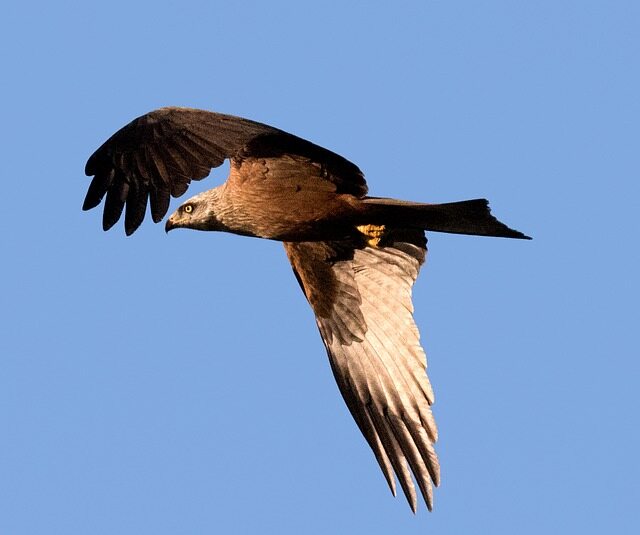
Hunting and Feeding Strategies
Eagles’ hunting and feeding strategies are shaped by their physical adaptations for flight, allowing them to efficiently locate, pursue, and capture their prey.
These birds of prey employ various hunting techniques, depending on their species and the availability of prey in their environment.
Eagles possess exceptional vision, which enables them to spot their prey from great distances while soaring high in the sky.
They use their keen eyesight to identify potential targets, and then employ their powerful wings and sharp talons to swiftly dive towards their prey.
Once they have captured their prey, eagles use their strong beaks to tear apart the flesh and consume their meal.
Additionally, eagles exhibit specific foraging behavior, such as scavenging for carrion or stealing food from other birds.
Overall, eagles’ hunting and feeding strategies demonstrate their remarkable ability to adapt to different environments and secure their sustenance.
As we transition to the next section about social interactions and communication, it becomes evident that these behaviors are not solely driven by instinct alone.
Social Interactions and Communication
Social interactions and communication among eagles involve complex and intricate patterns of behavior, showcasing their remarkable ability to establish social hierarchies and maintain cohesive group dynamics.
Non-verbal communication plays a crucial role in eagle communities, where individuals rely on visual displays, body postures, and vocalizations to convey intentions and establish dominance.
These non-verbal cues are essential in maintaining social cohesion within the group.
Eagles exhibit a clear social hierarchy, with dominant individuals having preferential access to resources and mating opportunities.
Submissive individuals often display deferential behaviors, such as posturing and avoiding direct eye contact with dominant eagles.
This social hierarchy ensures efficient allocation of resources and reduces potential conflicts within the community.
Understanding the intricacies of social interactions and communication in eagles provides valuable insights into their behavior and aids in the conservation efforts for these magnificent birds.
As we transition into the subsequent section about ‘migration and seasonal movements,’ it is important to note that these social dynamics may also influence collective movement patterns and decision-making processes.
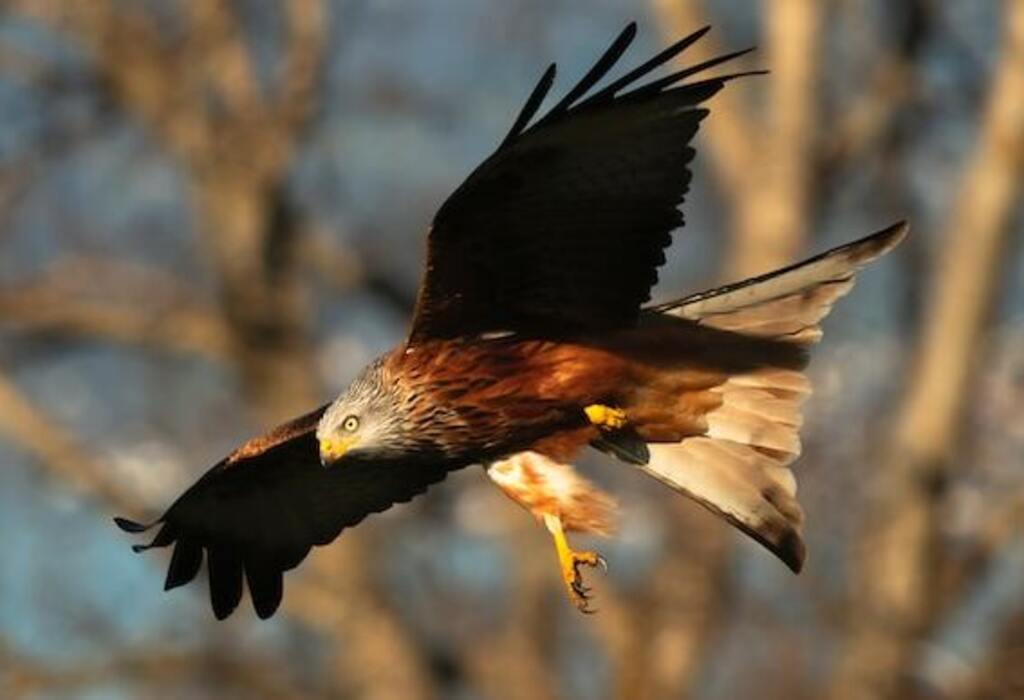
Migration and Seasonal Movements
Migration and seasonal movements in eagles involve the regular and often long-distance movements of these birds in response to environmental cues and resource availability.
Eagles exhibit distinct migration patterns, with some species traveling thousands of kilometers each year.
These movements are influenced by various environmental factors, including changes in temperature, food availability, and daylight duration.
Eagles rely on their keen vision and navigational abilities to make these journeys, utilizing landmarks such as coastlines, rivers, and mountain ranges.
They also take advantage of favorable wind patterns to conserve energy during flight.
Understanding the specific environmental cues that trigger migration in eagles is crucial for conservation efforts and the management of their populations.
By studying migration patterns and the factors that influence them, researchers can gain insights into the behavior and ecology of these majestic birds.
This knowledge can help inform conservation strategies and ensure the long-term survival of eagle populations.
Transitioning to the subsequent section about ‘lifespan and reproduction,’ eagles’ migration behavior is closely tied to their reproductive cycle.
Lifespan and Reproduction
The lifespan of eagles is an intriguing aspect of their biology, with some species living for several decades. Eagles exhibit fascinating mating behavior, often engaging in elaborate courtship rituals to attract a mate.
Once a pair is formed, they typically remain monogamous for life.
The female eagle lays one to three eggs, which both parents take turns incubating. After hatching, the young eaglets require extensive parental care, including feeding and protection.
The parents diligently provide food for their offspring, primarily fish and small mammals.
As the eaglets grow, they develop their flight feathers and eventually leave the nest, taking their first flights. This transition marks the beginning of their independent life.
Moving on to threats and conservation efforts, eagles face various challenges in their habitats, including habitat loss and degradation, pollution, and illegal hunting.
Conservation organizations work tirelessly to protect these majestic birds and their habitats, implementing measures such as habitat restoration, captive breeding programs, and public awareness campaigns to ensure their long-term survival.
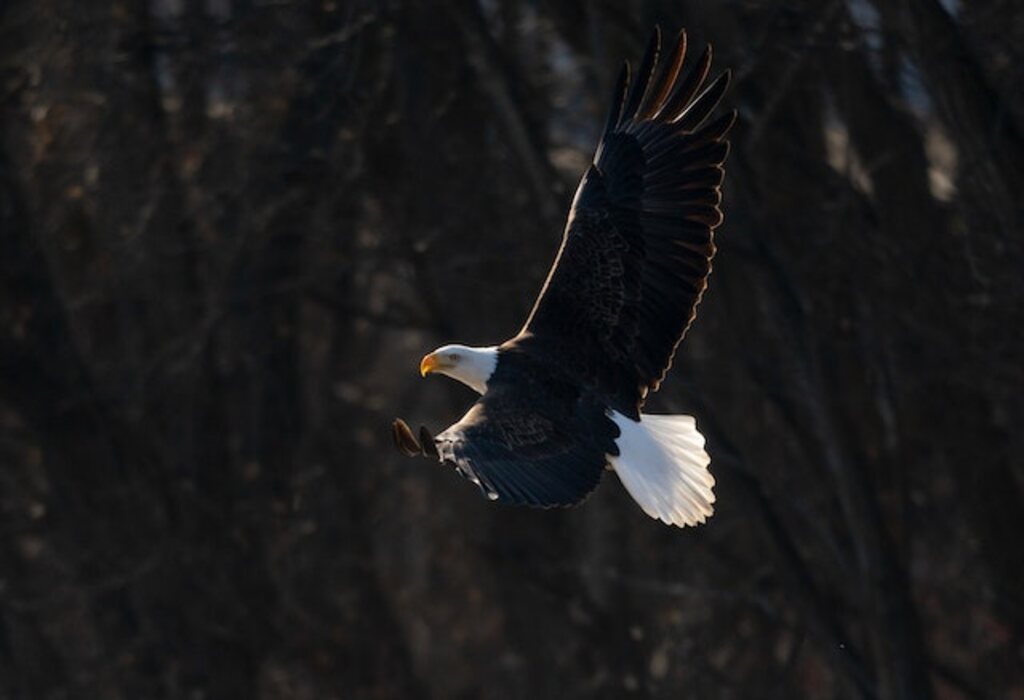
Threats and Conservation Efforts
Conservation efforts are crucial in protecting eagles and their habitats against threats like habitat loss, pollution, and illegal hunting. Eagles face numerous threats that put their populations at risk.
Habitat loss, caused by urban development, deforestation, and agricultural expansion, is a major threat to eagles.
Pollution, including pesticides, heavy metals, and oil spills, can contaminate their food sources and lead to reproductive issues and population decline.
Illegal hunting, driven by the demand for feathers, talons, and other body parts, also poses a significant threat to eagles.
To combat these threats, conservation efforts focus on habitat restoration, pollution control, law enforcement, and public education.
These efforts aim to ensure the survival and recovery of eagle populations.
Transitioning to the subsequent section about the symbolism and cultural significance of eagles, their conservation is not only important for their ecological role but also for their cultural importance and symbolic value.
The Symbolism and Cultural Significance of Eagles
Threats to eagles and conservation efforts have been crucial in ensuring the survival of these majestic birds.
However, eagles hold much more than just ecological importance; they also possess great symbolism and cultural significance.
Eagles have long been revered as powerful symbols of strength, freedom, and courage in various cultures around the world.
They are often associated with gods, deities, and national emblems, representing the ideals of liberty and independence.
Furthermore, eagles have been depicted in art, literature, and folklore, further solidifying their cultural significance.
Understanding the symbolism and cultural significance of eagles allows us to appreciate and respect their presence in our society.
Transitioning into the subsequent section about observing eagles in the wild, it is essential to recognize the importance of these magnificent creatures in their natural habitat.
Observing Eagles in the Wild
Observing the behavior and habitat of eagles in their natural environment provides valuable insights into their ecological role and can contribute to our understanding of predator-prey dynamics.
Eagles, known for their majestic flight, exhibit various behaviors that reflect their predatory nature. They soar high in the sky, utilizing thermal updrafts to conserve energy during flight.
Eagles are also known for their keen eyesight, which enables them to spot prey from great distances.
In terms of nesting habits, eagles typically build large nests in tall trees or on cliff ledges. These nests are built using sticks and lined with soft materials.
Eagles are known for their loyalty to their nesting sites, often returning to the same nest year after year.
By studying eagle behavior and nesting habits, we gain a deeper appreciation for the intricate ecological interactions that shape their existence.
Understanding their behavior allows us to better celebrate the majesty of eagle flight.

Conclusion: Celebrating the Majesty of Eagle Flight
By studying the intricate ecological interactions that shape the existence of eagles, we gain a deeper appreciation for the majesty of their flight.
Eagles are not only magnificent creatures, but they also hold great symbolism in various cultures around the world.
Their soaring flight represents freedom, power, and strength. Observing eagles in the wild allows us to witness their impressive hunting techniques, as they dive at incredible speeds to catch their prey.
Additionally, their conservation is of utmost importance to ensure their continued existence.
By protecting their habitats, managing their populations, and raising awareness about the threats they face, we can contribute to the preservation of these remarkable birds.
Celebrating the majesty of eagle flight goes beyond admiring their physical abilities; it also involves taking action to ensure their survival for future generations.
Frequently Asked Questions
How long does it take for an eagle to learn how to fly?
The process of eagle flight training is a meticulous one, involving several stages of development. It takes time for these majestic creatures to learn the art of flight, but with dedication and patience, they eventually soar with grace and freedom.
Do eagles fly at night?
Eagles are not typically nocturnal hunters and do not fly at night. They have diurnal hunting habits and are active during daylight hours. Eagles have specific sleeping patterns, which vary depending on the species and their habitat.
What is the maximum distance an eagle can fly in a day?
The maximum distance an eagle can fly in a day depends on its maximum endurance and the purpose of its flight. Eagles are known for their impressive migration patterns, covering hundreds of kilometers in a single day.
Can eagles fly in extreme weather conditions?
Eagles are capable of flying in extreme weather conditions due to their adaptability and strong flight abilities. However, climate change can disrupt eagle migration and alter flight patterns, potentially impacting their ability to fly in certain weather conditions.
How do eagles communicate with each other while in flight?
Eagles communicate with each other in flight through a combination of vocalizations and body language. Vocalizations include calls, screams, and chirps, while body language involves visual cues such as wing movements and postures.

